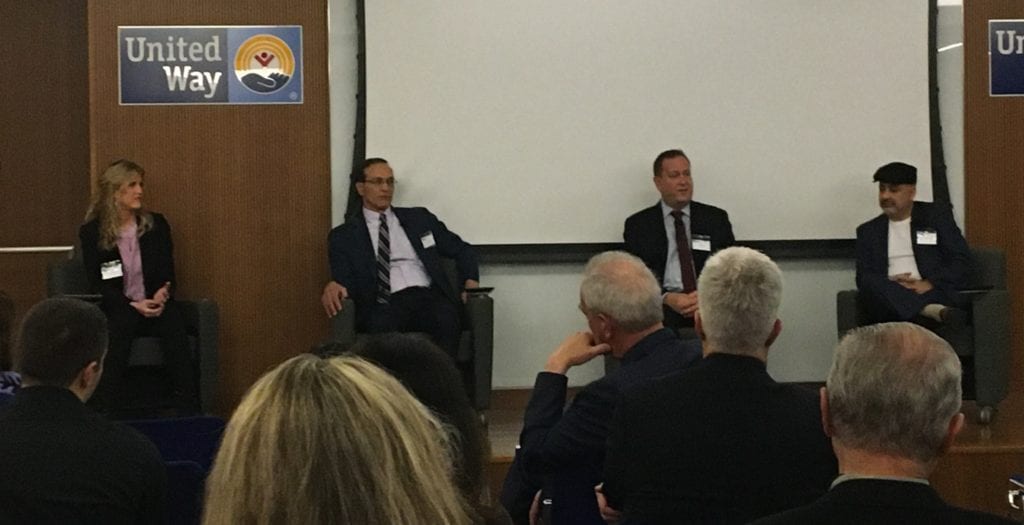
The FAA plans to request information from industry on how manned aviation can leverage remote ID signals emitted by drones.
The Federal Aviation Administration (FAA) is planning to ask industry how manned aviation can interact with remote identification signals emitted by drones as part of its roadmap to integrating unmanned aircraft into the national airspace.
“We are in discussion inside the FAA about producing a request for information on how manned aviation could take advantage of remote identification signals,” Jay Merkle, director of the FAA’s UAS integration office, said at an event hosted by the Royal Aeronautical Society. “At the moment, were a little busy with remote identification and getting that implemented. We hope to do that early this year, but it’s still on our plate.”
In December, the agency released its proposal for remote ID, which would require most drones to transmit identifying information — serial number, location of the drone, location of its operator — via both broadcast and an internet connection. The proposal, which the agency expects will take 18-24 months to finalize, has generated more than 10,000 formal comments.
Remote ID will assist in de-conflicting unmanned traffic and enabling law enforcement to locate disruptive operators, but how the agency will ensure safe interactions between manned and unmanned aviation is still a question. Drones mostly operate in low-altitude airspace and are forbidden from flying near airports, but will still share airspace, particularly with helicopters.
“There’s no silver bullet in manned aviation, and there won’t be a silver bullet for unmanned aviation, but ADS-B In for unmanned aviation can be very helpful in minimizing the risk of encountering another aircraft,” Merkle said, stopping short of speculating whether ADS-B In might be required for drones. “It doesn’t help very much where aircraft are not required to broadcast ADS-B.”
“There are vast portions of this country where ADS-B is not required. So there, the air risk associated with a non-cooperative aircraft is very different than inside the Mode C veil,” Merkle added, referring to controlled airspace around Class B airports. “Again, back to this layered risk mitigation approach, we have to have different strategies for where ADS-B is required versus where it is not required.”
A project based in San Diego, participating in the FAA’s UAS Integration Pilot Program, is exploring the use of ADS-B In within the Mode C Veil, Merkle said.
Authorization for the IPP program expires in October, but the agency is committed to continuing the program — in one form or another — and is currently in talks with the Department of Transportation and the White House to determine how to move forward.
“It’s clear that the job of integrating drones into the national airspace will continue after that, so we have to figure this out,” Merkle said.
Phil Kenul, chair of ASTM’s Committee F38 on unmanned aircraft systems, said the committee’s recommendation for implementation of remote ID — in the works for the past 18-20 months — is “now in its final edit” and may be published next week. Standards development for flying beyond visual line of sight, however, will require more work.
“We put another administrative committee together that’s looking at how to get there,” Kenul said. “To be honest with you, we have a BVLOS strategy at ASTM, I don’t think it answers the mail, it’s not good, so we decided we’re going to go back and do it right.”
Panelists also commented on limited Chinese involvement in international standards development around UTM, citing the International Standards Organization and the Joint Authorities for Rulemaking on Unmanned Systems, or JARUS, as the only places where Chinese stakeholders have been active.
“It’s been very difficult to figure out where China is, from our perspective,” Merkle said, mentioning the regionalized and military-dominated nature of China’s airspace. “It’s very difficult to figure out what China is doing from the outside.”